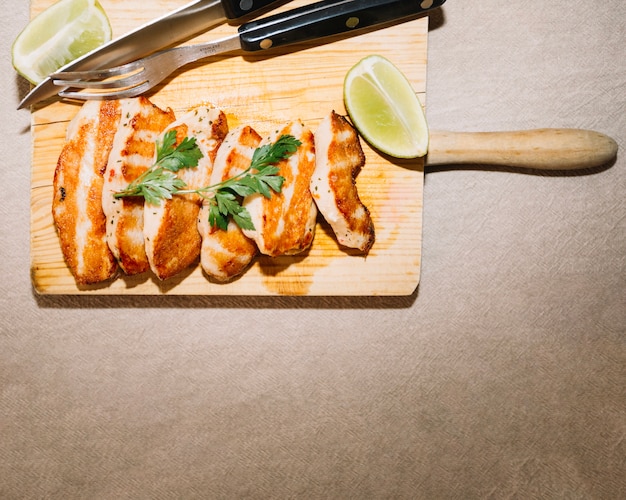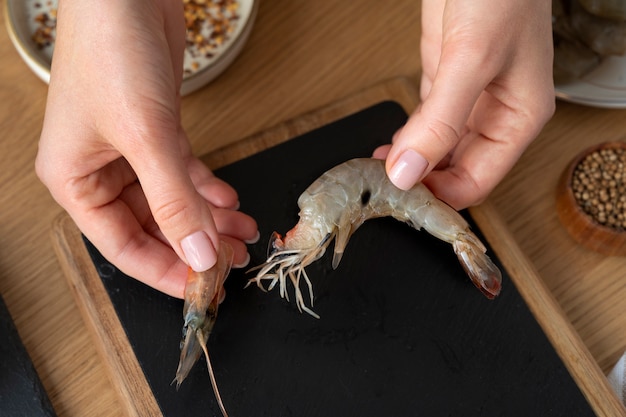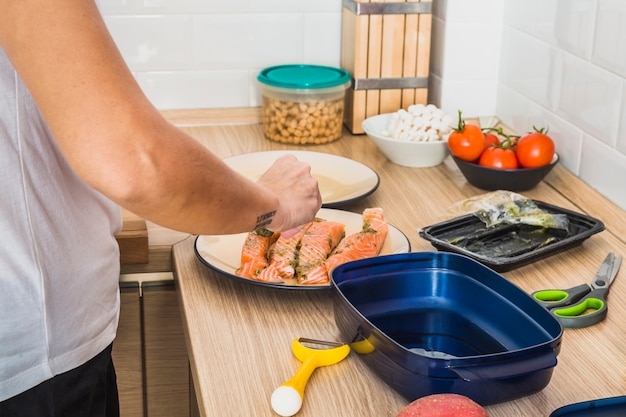I’ve been cooking shrimp for years, and I can tell you, there’s nothing more disappointing than biting into a tough, rubbery shrimp. It’s like a culinary tragedy, right? Over the years, I've learned a thing or two about getting that perfect shrimp cook – juicy, tender, and bursting with flavour. That’s what we’re going to dive into today.
This guide will walk you through everything you need to know about cooking shrimp on the stovetop. We'll cover the best ways to prepare them, how long to cook them, and even how to tell if they're done. Plus, I'll throw in some of my favourite tips and tricks that I've picked up along the way. Let's get cooking!
(Part 1) Understanding Shrimp

Before we jump into the cooking process, let's get acquainted with our star ingredient – shrimp! They’re crustaceans, and you probably already know that, but it’s important to remember. Shrimp come in various sizes and types, each with its own unique flavour and texture. Today, we’ll be focusing on cooking shrimp on the stovetop, which is a fantastic way to bring out their natural flavour and create some seriously delicious dishes.
types of shrimp
The world of shrimp is quite diverse, but the most common varieties you’ll find in supermarkets are:
- Whiteleg Shrimp: These guys are a popular choice for a reason – they have a mild flavour and a firm texture. They are usually sold peeled and deveined, which saves you a bit of prep time.
- Tiger Shrimp: Known for their distinctive tiger stripes and slightly sweet flavour, Tiger shrimp are a bit more expensive than Whiteleg shrimp, but their deliciousness makes them worth the splurge.
- Pink Shrimp: These shrimp have a pinkish hue and a delicate flavour. They are often used in seafood cocktails and salads, adding a beautiful touch of colour and a subtle, sweet taste.
- Spot Prawns: Now, these prawns are a real treat. They have a rich, deep flavour and a firm texture, perfect for showcasing their natural goodness. You’ll typically find them fresh and they are best cooked simply to appreciate their deliciousness.
Size Matters
Shrimp are categorized by size, which is important to consider when choosing your shrimp. The size is denoted by the number of shrimp per pound. Here’s a breakdown to help you choose the right size for your dish:
| Size | Count per Pound | Description |
|---|---|---|
| Jumbo | 10-15 | These are the biggest shrimp and are ideal for grilling or baking, allowing them to shine as the star of the show. |
| Large | 16-20 | A versatile size, perfect for stir-fries or scampi, where they’ll cook quickly and add a delicious flavour to the dish. |
| Medium | 21-25 | A popular choice, great for pasta dishes or salads, as they hold their shape well and add a nice burst of flavour to the mix. |
| Small | 26-30 | Best for soups or stews, where they add a subtle flavour and a nice texture to the dish. |
| Tiny | Over 30 | Often used as a garnish or in seafood platters, adding a touch of elegance and a delicate flavour. |
Fresh or Frozen: Choosing Your Shrimp
Whether you choose fresh or frozen shrimp is a matter of preference and availability. fresh shrimp, if you can find them, will have a lovely, vibrant colour and a firm texture. You can tell they're fresh by the smell – they should have a fresh, slightly sweet aroma. Frozen shrimp are a good option when fresh shrimp are unavailable. Just make sure they're frozen solid and stored properly.
Personally, I always try to go for fresh shrimp when I can, but I’ll admit that frozen shrimp is a real lifesaver when you need them in a hurry. Just make sure you thaw them properly before cooking!
(Part 2) Prepping the Shrimp

Once you’ve got your shrimp, it’s time to prepare them for cooking. This involves cleaning them and deveining them, if needed.
Cleaning and Deveining
First things first, you’ll need to clean your shrimp. You can do this by rinsing them under cold water, removing any dirt or debris. You might also want to trim off the heads and legs. Don’t throw those away! They can be used to make a delicious stock. If the shrimp have the intestinal vein, you can devein them, but it’s not mandatory. To devein, make a shallow cut down the back of the shrimp and gently remove the vein with a small knife or a toothpick.
Alternatively, some people find it easier to use a skewer to remove the vein by lifting it out from the end. It’s a personal preference, so try both methods and see what works best for you.
Marination Magic
Marination is an optional step, but it can seriously elevate the flavour of your shrimp. You can marinate them in a simple mixture of olive oil, lemon juice, and herbs, or go for something more complex like garlic, chilli flakes, and soy sauce. The key is to marinate the shrimp for at least 30 minutes, but ideally for an hour or two, to allow the flavours to infuse deeply.
(Part 3) Cooking Shrimp on the Stovetop

Now comes the fun part! Here's the breakdown of how to cook shrimp on the stovetop, along with some tips and tricks to achieve that perfect cook.
Method 1: Pan-Frying
Pan-frying is a classic way to cook shrimp, resulting in a beautiful golden-brown crust and a tender, juicy interior. Here’s what you need to do:
- Heat a skillet: Start by heating a large skillet over medium-high heat. Add a drizzle of olive oil or butter to the skillet.
- Add the shrimp: Once the oil is shimmering, add your shrimp in a single layer. Don't overcrowd the skillet, as this will cause the shrimp to steam instead of sear. You want them to get a nice golden crust.
- Cook for 2-3 minutes: Cook the shrimp for 2-3 minutes per side, or until they are pink and opaque. If you're using larger shrimp, you might need to cook them for a few minutes longer.
- Season and serve: Season the shrimp with salt, pepper, or any other desired spices. Serve immediately with a squeeze of lemon juice or a drizzle of your favourite sauce.
Pro Tip: To get an extra crispy crust on your shrimp, pat them dry with a paper towel before adding them to the skillet. This helps remove any excess moisture, allowing the shrimp to brown beautifully.
Method 2: Sautéing
Sautéing is similar to pan-frying but involves cooking the shrimp in a larger amount of liquid. This creates a more delicate flavour and a slightly softer texture.
- Heat a pan: Heat a large skillet over medium heat. Add a drizzle of olive oil or butter and your favourite aromatics like garlic, onion, or ginger.
- Add the shrimp: Once the aromatics are fragrant, add the shrimp and cook for 2-3 minutes per side, or until they are pink and opaque. You can add a splash of white wine or broth to the pan to deglaze and create a delicious sauce.
- Season and serve: Season the shrimp with salt, pepper, and any other desired spices. Serve immediately over rice, noodles, or your favourite side dish.
Pro Tip: If you want a richer flavour, try adding a tablespoon of butter to the pan towards the end of cooking. The butter will melt and create a beautiful sauce that coats the shrimp.
Method 3: Boiling
Boiling shrimp is a simple and quick method for a light and flavourful dish. It's perfect for using in salads, soups, or as a snack.
- Bring water to a boil: Fill a large pot with water and bring it to a rolling boil. Add a pinch of salt and your favourite aromatics, like bay leaves or peppercorns, to the water.
- Add the shrimp: Once the water is boiling, add the shrimp and cook for 2-3 minutes, or until they are pink and opaque. Don't overcook them, or they will become tough.
- Drain and serve: Remove the shrimp from the boiling water using a slotted spoon and serve immediately. You can chill the cooked shrimp for later use in salads or pasta dishes.
Pro Tip: For a more intense flavour, try adding a splash of lemon juice to the boiling water.
(Part 4) Determining Doneness
Knowing when your shrimp are cooked perfectly is crucial. Overcooked shrimp become tough and rubbery, while undercooked shrimp can be unsafe to eat. Here are a few ways to tell if your shrimp are done:
The Colour Test
The most obvious indicator is the colour change. Raw shrimp have a translucent, greyish colour. As they cook, they turn a beautiful pink or orange hue. They should also be opaque, meaning you can see through them anymore.
The Texture Test
Another way to check doneness is by feeling the texture. Cooked shrimp will be firm to the touch and will spring back slightly when pressed.
The internal temperature Test
For a more accurate check, you can use a meat thermometer. The internal temperature of cooked shrimp should reach at least 145 degrees Fahrenheit (63 degrees Celsius).
(Part 5) Serving and Storage
Once your shrimp are cooked to perfection, it’s time to enjoy them! Serve them immediately for the best flavour and texture. You can also store them for later use.
Serving Options
There are endless possibilities when it comes to serving shrimp. Here are a few ideas:
- shrimp scampi: A classic Italian dish with garlic, butter, and white wine that’s always a crowd-pleaser.
- shrimp tacos: Grilled or sautéed shrimp with your favourite toppings like salsa, avocado, and sour cream – a delicious and easy option for a weeknight meal or a fun party appetizer.
- shrimp pasta: A simple and delicious pasta dish with shrimp, garlic, and olive oil that’s perfect for a light and flavorful meal.
- shrimp salad: A light and refreshing salad with shrimp, chopped vegetables, and your favourite dressing. It’s a great option for a summer lunch or a side dish.
- grilled shrimp: Marinated shrimp grilled to perfection and served with lemon wedges. It’s a delicious and elegant option for a barbecue or a special occasion.
Storage Tips
If you have leftover cooked shrimp, store them properly to keep them fresh.
- Refrigerate: Store cooked shrimp in an airtight container in the refrigerator for up to 3-4 days.
- Freeze: You can also freeze cooked shrimp for up to 3 months. Freeze them in a single layer on a baking sheet, then transfer them to a freezer-safe bag to prevent freezer burn.
Personally, I like to freeze my leftover shrimp for later use in pasta dishes or stir-fries. It’s a great way to avoid food waste and have a delicious meal on hand when you’re short on time.
(Part 6) Shrimp Mistakes to Avoid
We all make mistakes in the kitchen, but some mistakes are more common than others. Here are some pitfalls to avoid when cooking shrimp:
Overcrowding the Skillet
Don’t overcrowd your skillet with shrimp. This will cause them to steam instead of sear, resulting in a soggy and bland dish. Make sure there’s enough space for the shrimp to cook evenly.
Overcooking
Overcooked shrimp become tough and rubbery. Cook them for the recommended time, and don’t overcook them! Be sure to check them regularly to make sure they’re cooked through but not overdone.
Using Too High Heat
While you need high heat to sear shrimp, you don’t want to use too high of heat. This can cause them to burn on the outside before they are cooked through on the inside. Use medium-high heat to ensure even cooking.
(Part 7) Shrimp Cooking Hacks
Here are some helpful tips and tricks to elevate your shrimp game:
Use a Timer
A timer is your best friend when cooking shrimp. Set a timer for 2-3 minutes, and don’t forget to flip the shrimp halfway through. This ensures they cook evenly on both sides.
Add Aromatics
Enhance the flavour of your shrimp by adding aromatics like garlic, onion, or ginger to the pan. Don’t be afraid to experiment with different combinations. Try adding a pinch of red pepper flakes for a bit of heat or some fresh herbs like parsley or thyme for a more delicate flavour.
Deglaze the Pan
Once you’ve removed the shrimp from the pan, deglaze the pan with a splash of white wine or broth to create a delicious sauce. It’s a great way to make use of all the flavour that’s stuck to the bottom of the pan.
Serve Immediately
Shrimp are best served immediately after cooking. They lose their texture and flavour quickly when they sit.
(Part 8) shrimp recipe Inspiration
Need some inspiration for your next shrimp dish? Here are a few recipes to get you started:
Garlic Butter Shrimp
Ingredients:
- 1 pound shrimp, peeled and deveined
- 4 tablespoons butter
- 4 cloves garlic, minced
- 1/4 cup white wine
- 1 tablespoon chopped fresh parsley
- Salt and pepper to taste
Instructions:
- Melt the butter in a large skillet over medium heat.
- Add the garlic and cook until fragrant, about 1 minute.
- Add the shrimp and cook for 2-3 minutes per side, or until pink and opaque.
- Pour in the white wine and bring to a simmer. Cook for 1 minute, or until the sauce has thickened slightly.
- Stir in the parsley, salt, and pepper. Serve immediately.
This is a classic recipe for a reason – it’s simple, delicious, and always impresses. Serve it over pasta or rice for a complete meal.
Spicy Shrimp Stir-Fry
Ingredients:
- 1 pound shrimp, peeled and deveined
- 1 tablespoon olive oil
- 1/2 cup chopped onion
- 1/2 cup chopped bell pepper
- 1/4 cup chopped broccoli
- 1/4 cup chopped carrots
- 1 tablespoon soy sauce
- 1 tablespoon oyster sauce
- 1 tablespoon honey
- 1 teaspoon red pepper flakes
- Salt and pepper to taste
Instructions:
- Heat the olive oil in a large skillet over medium-high heat.
- Add the onion, bell pepper, broccoli, and carrots and cook for 5 minutes, or until tender-crisp.
- Add the shrimp and cook for 2-3 minutes per side, or until pink and opaque.
- Stir in the soy sauce, oyster sauce, honey, and red pepper flakes.
- Cook for 1 minute, or until the sauce has thickened slightly.
- Season with salt and pepper. Serve immediately over rice or noodles.
This stir-fry is packed with flavour and is a great way to get your vegetables in. It’s also very quick and easy to make, perfect for a busy weeknight.
FAQs
1. Can I cook frozen shrimp?
Yes, you can definitely cook frozen shrimp. Just make sure they are thawed completely before cooking. You can thaw them in the refrigerator overnight or by rinsing them under cold water for about 30 minutes. Avoid thawing them in warm water, as this can affect their texture.
2. How do I know if my shrimp are bad?
Fresh shrimp should have a sweet, slightly fishy smell. If they smell ammonia-like or have a sour odor, they are likely bad. They should also have a firm texture and a translucent, greyish colour. If they are mushy or discolored, they are not fresh.
3. What's the best way to season shrimp?
Shrimp are very versatile and can be seasoned with a variety of flavours. Some classic seasonings include salt, pepper, garlic, lemon juice, paprika, and cayenne pepper. You can also experiment with more complex flavour profiles by using herbs and spices like oregano, thyme, basil, chili powder, and cumin.
4. Can I cook shrimp in a microwave?
You can cook shrimp in a microwave, but it's not the most ideal method. It can result in uneven cooking and a rubbery texture. If you're in a pinch, you can microwave shrimp on a microwave-safe plate with a small amount of water for about 1-2 minutes, or until they are cooked through.
5. How long can I store cooked shrimp in the refrigerator?
Cooked shrimp can be stored in the refrigerator for up to 3-4 days in an airtight container. It’s best to consume them within that timeframe for the best flavour and texture.
Everyone is watching

Corn on the Cob: The Ultimate Guide to Perfectly Cooked Ears
Healthy MealsAh, corn on the cob. Just the name evokes images of sunny days, barbecues, and that sweet, juicy flavour that ...

Perfect Pork Roast Oven Cooking Time: A Guide to Delicious Results
Healthy MealsThere's something truly satisfying about a perfectly roasted pork. The aroma alone is enough to make your mout...

Ham Cooking Time: How Long to Bake, Smoke, or Boil a Delicious Ham
Healthy MealsAh, ham. It's a classic, isn't it? A real crowd-pleaser, especially around holidays. And when done right, it'...

Scallops: The Ultimate Guide to Perfect Cooking
Healthy MealsAh, scallops. Those delicate, sweet, and utterly delicious morsels of the sea. They hold a special place in my...

Spaghetti Squash: The Ultimate Guide to Cooking and Serving
Healthy MealsRemember that time you saw spaghetti squash at the supermarket, looking all bumpy and strange, and thought, "W...
